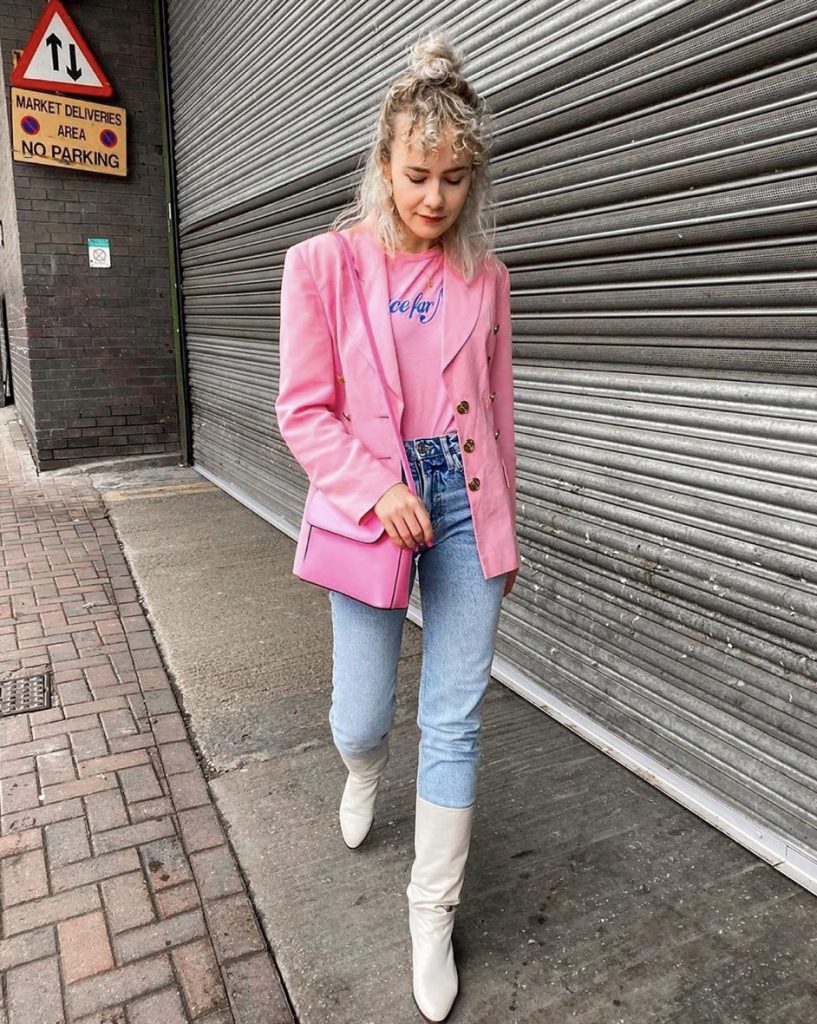It’s never been more chic to wear someone else’s clothing—that is, clothes that once belonged to someone else. Kate Moss herself is a great advocate of vintage. “I love the idea that the clothes have a history and have been worn previously,” she said recently in a press interview for her new book. “Who knows what they have experienced?” While we can’t all be the poster child for the super glamorous supermodels, there’s no doubt that the secondhand fashion market is thriving. According to a study by ThredUp earlier this year, the total secondhand apparel market is set to double in the next five years—with resale and shopping apps driving a lot of that growth. In fact, resale has grown a whopping 21 times faster than retail over the past three years.
These are numbers to be happy about, especially when we are coming to terms with the impact that consumerism and fashion can have on the planet.
Shopping apps like Depop, Carousell, and Poshmark have made names for themselves by offering users the opportunity to gain a little cash from clothes they probably just had lying around anyway. Closer to home, Toronto-grown trading app Bunz, extended this philosophy past just your closet to your entire household.
There’s money to be made off of your own closet, it seems—and with strangers you’ve never met on the internet.
The sustainability bonus is a significant benefit.
Ethical blogger Nannan Wan has been a proponent for secondhand fashion for a while, noting that consumer trends are shifting quickly away from fast fashion to more sustainable options.
“Secondhand clothing has started a movement where it’s now cool to purchase luxury vintage at the thrift store,” she says. “These apps open the space for people to explore secondhand buying and selling, maybe for the first time.”
What makes these apps so attractive, aside from diverting has-been clothing from landfills, is knowing that you’re in it together with thousands of others with similar goals. These apps have gained traction not only for their ease of use, but also the platforms and communities that they have created.
Poshmark, for example, made its hotly-anticipated expansion to Canada just this year (after being founded 8 years ago in California. The app now boasts over 500,000 users in Canada alone.

“Our app allows people to create a revolving closet, giving a second, third, or even fourth life to clothing while also making room for new pieces,” says Maria Morales, Poshmark’s Director of International Expansion.
“But most importantly, Poshmark is a social platform above all else. We’ve seen the community grow so quickly because buyers and sellers have the ability to like, share, comment, and build connections with each other.”
Community is the core driving force of these apps and consequently, it’s become the core driving force of secondhand fashion in general.
These apps would be unfeasible if not for the thousands of users scrolling, posting, and engaging everyday. The apps offer a new digitized version of thrift shopping and conscious consumerism, and they do it in a way that is mimics social media.

London-born Depop gained traction due to its uncanny resemblance to Instagram, (founded a year earlier in 2010). Users have similar profile pages with likes and comments, and the home feed looks nearly identical.
Even Bunz originated from a secret Facebook group.
Since 2016, the company has grown to a user base of over 400,000 and averaging 5,000 posts a day—with clothing and accessories as its largest category, about three times as much posted daily as furniture or beauty.
For Toronto-based illustrator Wandy Cheng, Bunz is a welcoming place, where you can get rid of things for something useful to satisfy both parties’ needs.
“The app had just launched when I joined, so it was a whole new exciting space for everyone,” she says. Cheng has quite an extensive history with reselling clothes, from Kijiji and eBay to Salvation Army, but stuck with Bunz because of the people she found there.
“Compared to other sites, Bunz was the only space where I felt a strong sense of community, which was a surprising bonus when I had initially joined with the sole purpose to declutter.”
Since joining three years ago, Bunz and thrift-shop finds to make up the bulk of her closet—however, she continues: “I’ve also been making a conscious effort [not only] to buy less, but also to bring less clothes into my life. Although I am still excited to trade for cool items, I ponder on the article of clothing for a lot longer than I used to.”
Whether you’re just dipping your toe into the world of reselling or if you’ve been a secondhand apparel wearer for years, there’s no question that apps have become an integral part of the process.
Poshmark, Bunz, and Depop apps act like closet extensions, mini thrift-shops and social platforms all in one—all from your phone, meaning you don’t even have to leave your house. It’s like online shopping, except better for the planet. Only in this case, there’s no telling what—or who— you’ll find.
